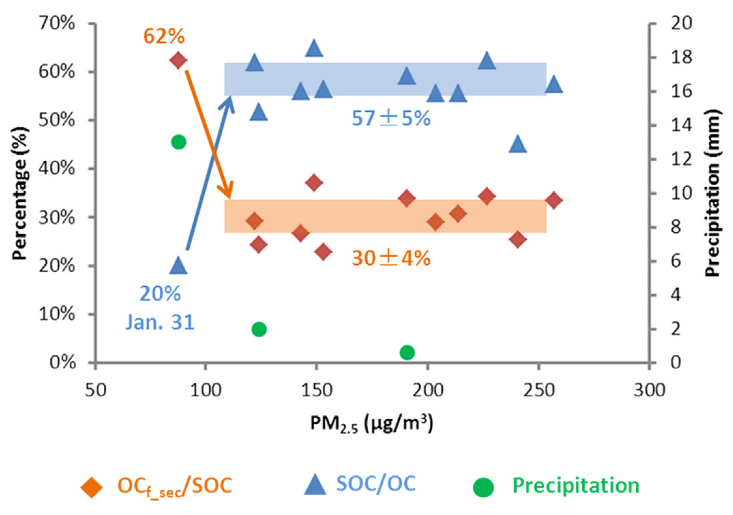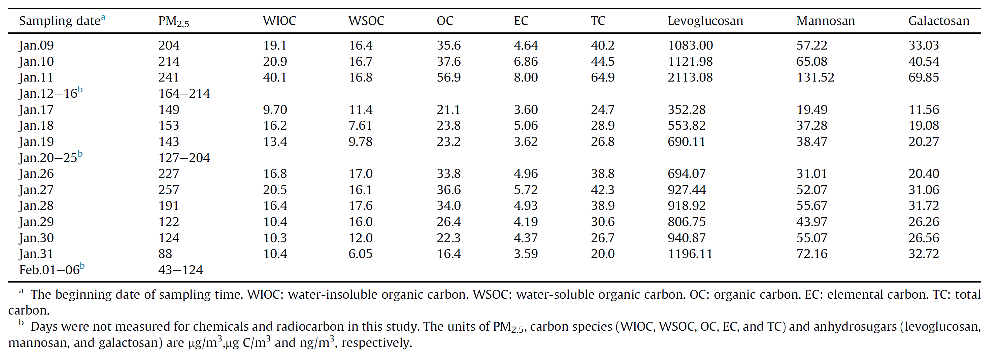Q2. What is the main factor leading to the formation of this haze?
Using an aerodyne aerosol chemical speciation monitor, Sun et al. (2014) found that stagnant meteorological conditions, coal combustion, secondary production, and regional transport were the main factors leading to the formation of this haze in Beijing.
Q3. Why did the public, government, and scientists raise concerns about the haze?
Because a high PM2.5 loading can cause a reduction in visibility, climate changes, and human respiratory-cardiovascular diseases (Brunekreef and Holgate, 2002; Menon et al., 2002; Deng et al., 2008; Wang et al., 2014b), many concerns were raised by the public, government, and scientists.
Q4. What are the sources of carbon in the atmosphere?
These carbon particles in the atmosphere have two sources: fossil fuel (FF, e.g., from traffic exhaust, coal combustion, industry) and non-fossil (NF, e.g., from open/forest fire, biofuel burning, biogenic emission) emissions.
Q5. What is the source-apportionment method for OC?
A source-apportionment method for OC, including primary and secondary sources, was implemented using the measured carbon fractions, anhydrosugars, and 14C isotopic signals.
Q6. What is the composition of the gross domestic product in Wuhan?
According to the annual report of the Editorial Department of Wuhan Statistical Yearbook-2014, the gross domestic product was composed of agriculture (3.7%), industry (48.6%), and other sectors (47.7%).
Q7. What is the contribution of FF to EC?
Andersson et al. (2015) found that during this haze period FF sources on average contributed 74%, 68% and 68% to EC in Beijing, Shanghai and Guangzhou, respectively.
Q8. What is the origin of haze particles in Wuhan?
To determine the origins of haze particles, the authors measured 14C isotopic signals and unique organic tracers in PM2.5 samples with various levels in Wuhan (Fig. S1), the largest (~550 km2) and most densely populated metropolis (~10 million) in central China.
Q9. What was the RSD for the WSOC and TC measurements?
Values of fm for WSOC and TC were calculated from the isotopic mass conservation, and the fm(OC) values reported here were corrected by a field blank (0.45 µg C/cm2; fm = 0.61 ± 0.02).
Q10. What is the effect of biomass burning on the haze phenomenon in china?
These results suggest that biomass burning is an important driver for the haze phenomenon in Chinese cities, which probably because the burning of biofuel is still very extensive in China, especially in winter season.
Q11. What is the reason for the haze crisis?
this large-scale haze crisis was very likely caused by the convergence of materials from numerous point sources in regions with different sources.
Q12. What is the effect of BB on OCnf_sec?
These results show a significantly dominant influence of BB on OCnf_sec during this long-lasting winter haze, corresponding to the very low levels of biogenic VOCs in winter.
Q13. What is the important factor in the calculation of SOCbb?
In this study, a rough estimation of SOCbb (SOCbb = OCnf_sec - SOCbio) was obtained based on the combination of 14C and molecular markers of biogenic emissions (Table S2).





